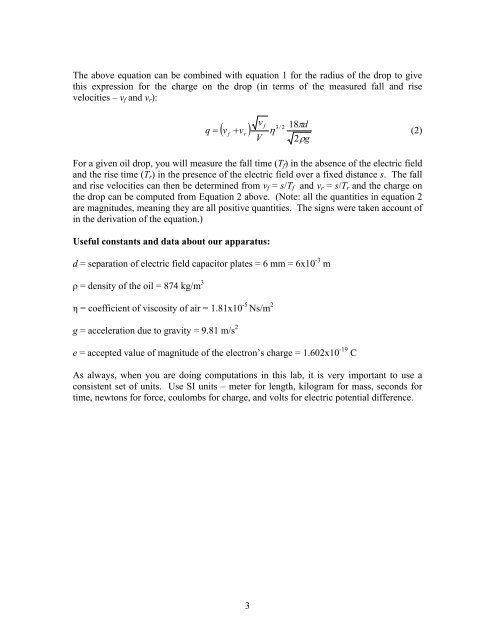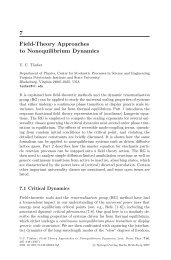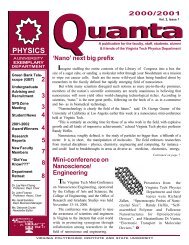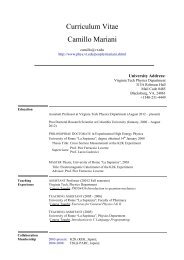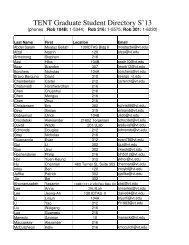Millikan writeup - Physics
Millikan writeup - Physics
Millikan writeup - Physics
Create successful ePaper yourself
Turn your PDF publications into a flip-book with our unique Google optimized e-Paper software.
The above equation can be combined with equation 1 for the radius of the drop to give<br />
this expression for the charge on the drop (in terms of the measured fall and rise<br />
velocities – v f and v r ):<br />
v<br />
f 2 18d<br />
q v<br />
f<br />
vr<br />
<br />
3/<br />
(2)<br />
V 2g<br />
For a given oil drop, you will measure the fall time (T f ) in the absence of the electric field<br />
and the rise time (T r ) in the presence of the electric field over a fixed distance s. The fall<br />
and rise velocities can then be determined from v f = s/T f and v r = s/T r and the charge on<br />
the drop can be computed from Equation 2 above. (Note: all the quantities in equation 2<br />
are magnitudes, meaning they are all positive quantities. The signs were taken account of<br />
in the derivation of the equation.)<br />
Useful constants and data about our apparatus:<br />
d = separation of electric field capacitor plates = 6 mm = 6x10 -3 m<br />
ρ = density of the oil = 874 kg/m 3<br />
η = coefficient of viscosity of air = 1.81x10 -5 Ns/m 2<br />
g = acceleration due to gravity = 9.81 m/s 2<br />
e = accepted value of magnitude of the electron’s charge = 1.602x10 -19 C<br />
As always, when you are doing computations in this lab, it is very important to use a<br />
consistent set of units. Use SI units – meter for length, kilogram for mass, seconds for<br />
time, newtons for force, coulombs for charge, and volts for electric potential difference.<br />
3


